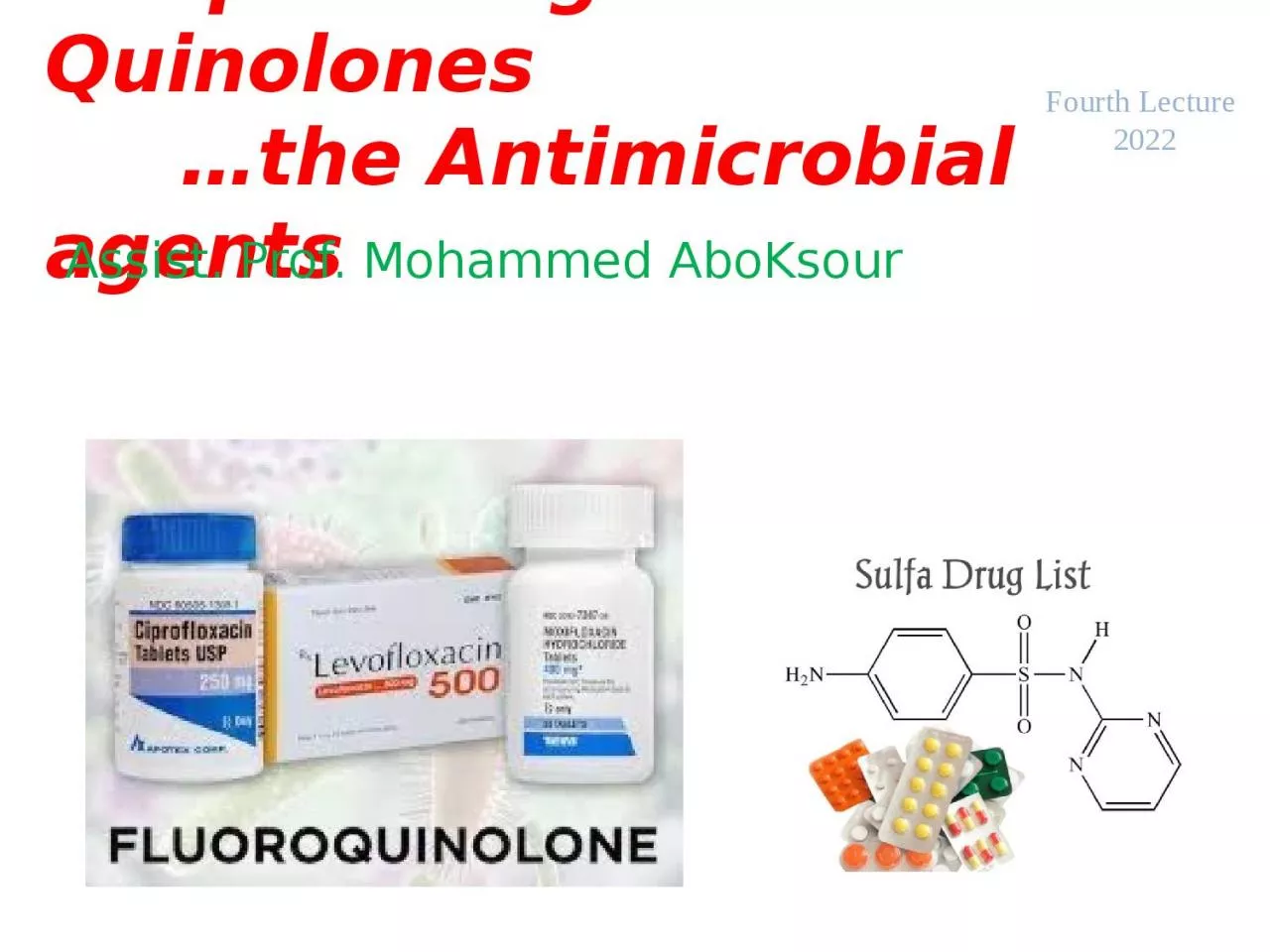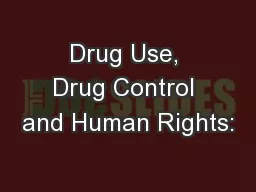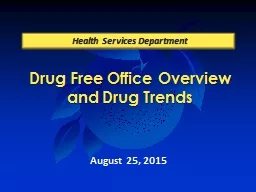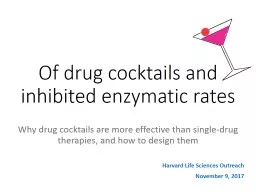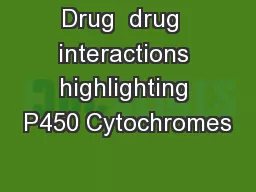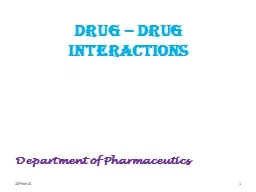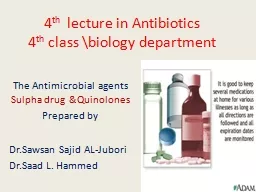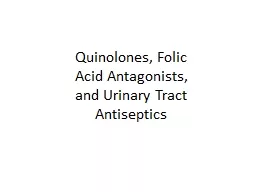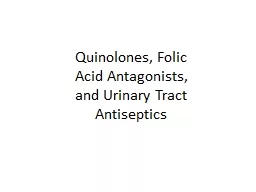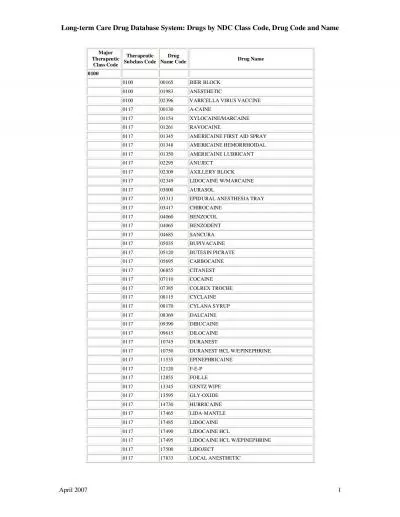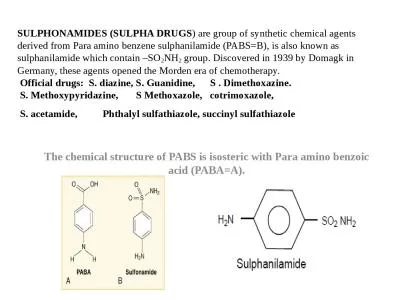PPT-Sulpha drug & Quinolones
Author : melody | Published Date : 2024-02-09
the Antimicrobial agents Fourth Lecture 2022 Assist Prof Mohammed AboKsour Sulfonamides are synthetic antimicrobial agents that contain the active antibacterial
Presentation Embed Code
Download Presentation
Download Presentation The PPT/PDF document "Sulpha drug & Quinolones" is the property of its rightful owner. Permission is granted to download and print the materials on this website for personal, non-commercial use only, and to display it on your personal computer provided you do not modify the materials and that you retain all copyright notices contained in the materials. By downloading content from our website, you accept the terms of this agreement.
Sulpha drug & Quinolones: Transcript
Download Rules Of Document
"Sulpha drug & Quinolones"The content belongs to its owner. You may download and print it for personal use, without modification, and keep all copyright notices. By downloading, you agree to these terms.
Related Documents

